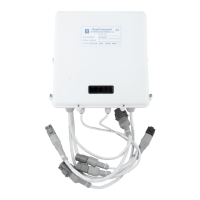10.2 Troubleshooting Questions
Prior to lifting a tool or stepping on board the vessel, many problems can be resolved by asking the customer
the following basic questions:
A Is the System installed on a Single, Twin or Multiple Screw vessel?
• If the System is installed on a Single Screw vessel, this question does not have much value in
narrowing down the source of the problem.
• If the System is installed on a Twin or more Screw application, this question is quite useful, if
you ask the following question.
• Does the problem or symptom occur on the Port, Starboard or both sides?
• If the problem or symptom occurs on one side only, you have effectively
eliminated 50% of the possible causes. For example, the symptom only occurs
on the Port side. All of the components on the Starboard side have been
eliminated as potential causes.
B What is the Part Number and Serial Number of the Processor?
• Whenever the factory is called for technical assistance, the part number and serial number
will be required. These numbers provide the Service Technician information about the
operating characteristics of the Processor. The numbers are located on the Processor’s front
cover.
C How many Remote Stations are there?
• If only one Remote Station is present, not much will be gained by asking this question.
However, if more than one Remote Station is being used, command should be taken from one
of the other Stations to see if the problem occurs from another station.
• If the problem occurs from more than one Remote Station, the odds are that the Control
Heads are not the cause of the trouble.
• If the problem occurs at one Remote Station only, there is a greater chance of the Control
Head or the Control Head Harness of being the cause.
D Are any tones generated when the problem occurs?
The tones are used to bring the operator’s attention to a possible condition or problem.
The following basic tones can be produced on all Systems:
• Slow Repetitive Tone (Refer to Section 10.5.1.1: Slow Repetitive Tone)
• One Long- Three Short Tones
(Refer to Section 10.5.1.2: One Long - Three Short Tones)
• Steady Tone
(Refer to Section 10.5.1.3: Steady Tone)
• Three Second Steady Tone
(Refer to Section 10.5.1.4: Three Second Steady Tone)
• Five Seconds On, Five Seconds Off - High Repetitive Rate Tone
(Refer to Section 10.5.1.6:
Five Seconds On, Five Seconds Off - High Repetitive Rate Tone)
• Five Second Steady Tone
(Refer to Section 10.5.1.7: Five Second Steady Tone).
The following tones can be produced on all Systems utilizing Servo 1:
• One Long, One Short - High Repetitive Rate Tone (Refer to Section 10.5.2.2: One Long, One
Short - High Repetitive Rate Tones)
• One Long - One Short Tone
(Refer to Section 10.5.2.1: One Long - One Short Tone)
The following tones can be produced on all Systems utilizing Servo 2:
• One Long - Two Short Tones (Refer to Section 10.5.3.1: One Long - Two Short Tones)
• One Long, Two Short - High Repetitive Rate Tones
(Refer to Section 10.5.3.2: One Long,
Two Short - High Repetitive Rate Tones)
The following tone can be produced on all Systems using Solenoid Clutches:
• One Long - One Short Tone (Refer to Section 10.5.4.1: One Long - One Short Tone)
E Are there any Error Messages displayed on the Processor’s Display LED?
In addition to generating a tone, at any time the system detects a malfunction or fault, an error
message will be displayed at the Processor. Refer to Table 10-6: Basic Control System Error Codes for
an explanation of the errors.
F What is the status of the Control Head in command’s red LED?
• The red LED(s) will be in one of the following states:

